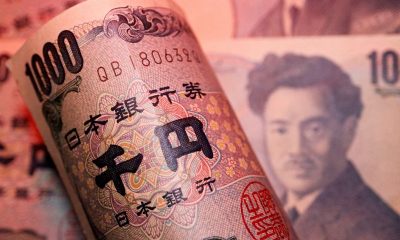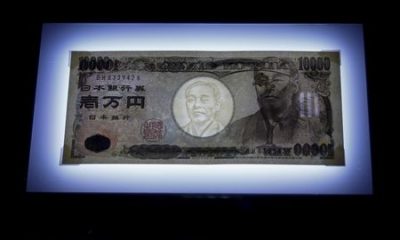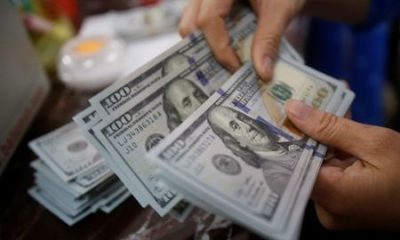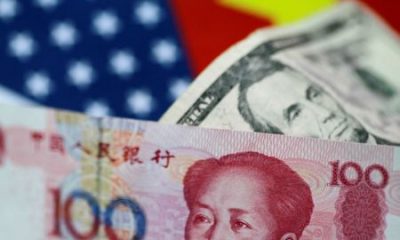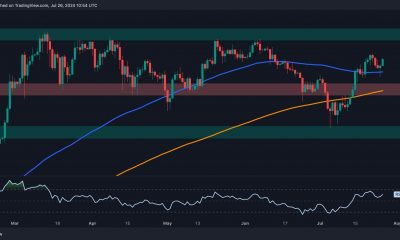Economy
European stocks have strongest day in 6 months as ECB signals end to rate hikes
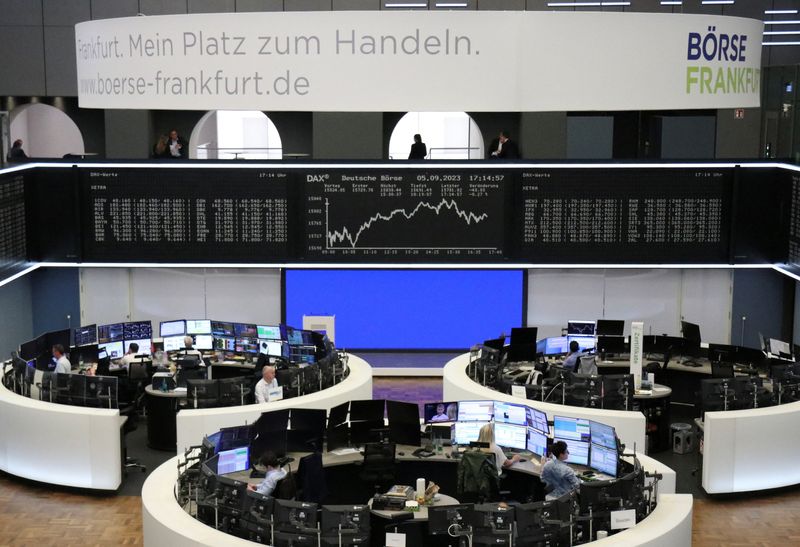
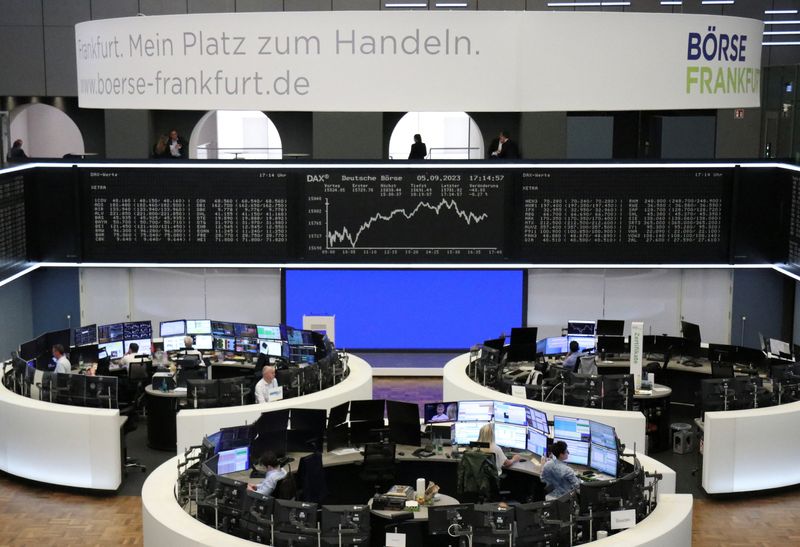
© Reuters. FILE PHOTO: The German share price index DAX graph is pictured at the stock exchange in Frankfurt, Germany, September 5, 2023. REUTERS/Staff/File Photo
By Bansari Mayur Kamdar and Shashwat Chauhan
(Reuters) -European shares notched up their biggest percentage gain in six months on Thursday after the European Central Bank (ECB) signalled that its monetary tightening was nearing an end, while stronger commodity prices boosted miners and energy stocks.
The pan-European index rose 1.5% to hit a more than one-week high, while the euro zone equities index climbed 1.3%.
European government bond yields retreated after the ECB raised its key interest rate to a record high of 4%, but with the euro zone economy in the doldrums, signalled this was likely to be its final move. [GVD/EUR]
The rate-sensitive real estate sector advanced 3.0%, while miners jumped 4.2% to lead sectoral gains due to stronger metal prices.
Mike Bell, global liquidity market strategist at J.P. Morgan Asset Management said that with business surveys indicating an imminent sharp slowdown in growth, the ECB is probably done hiking.
“Against the weaker growth backdrop, the ECB can probably pause at the next meeting and if the growth outlook continues to deteriorate a pause could morph into a peak.”
Denmark’s central bank also raised its key interest rate by 25 bps, following the ECB’s move earlier in the day.
UK’s resources-heavy outpaced regional peers with a 2.0% rise, while Oslo stocks jumped 1.8% to scale record highs.
The energy index rose 2.4% as crude prices hit 2023 highs.
Bucking the trend, the autos index declined 0.4%, with German automakers such as Mercedes, BMW (ETR:) and Volkswagen (ETR:) under pressure.
Beijing said the launch of a probe by the European Commission into China’s electric vehicle (EV) subsidies was protectionist and warned it would damage economic relations, a concern shared by Germany’s car industry.
Neste climbed 4.1% as Goldman Sachs raised the Finnish oil refiner and biofuels producer’s stock rating to “buy”.
THG tumbled 21.3% after the British e-commerce firm forecast its annual revenue from continuing operations to come in flat or drop up to 5%.
French spirits companies Pernod Ricard (EPA:) and Remy Cointreau dipped 0.3% and 1.4%, respectively, after Barclays downgraded the stocks to “underweight” from “overweight”.
Economy
Russian central bank says it needs months to make sure CPI falling before rate cuts -RBC
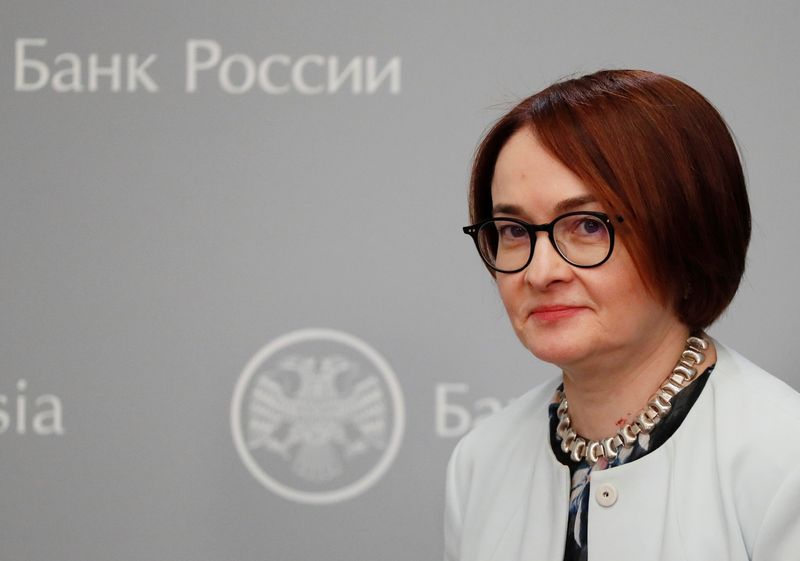
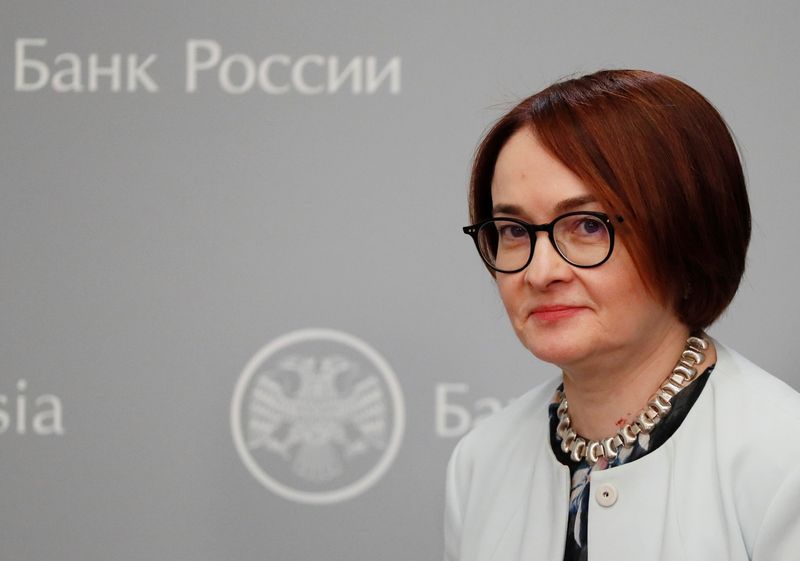
© Reuters. Russian Central Bank Governor Elvira Nabiullina attends a news conference in Moscow, Russia June 14, 2019. REUTERS/Shamil Zhumatov/File Photo
MOSCOW (Reuters) – Russia’s central bank will need two to three months to make sure that inflation is steadily declining before taking any decision on interest rate cuts, the bank’s governor Elvira Nabiullina told RBC media on Sunday.
The central bank raised its key interest rate by 100 basis points to 16% earlier in December, hiking for the fifth consecutive meeting in response to stubborn inflation, and suggested that its tightening cycle was nearly over.
Nabiullina said it was not yet clear when exactly the regulator would start cutting rates, however.
“We really need to make sure that inflation is steadily decreasing, that these are not one-off factors that can affect the rate of price growth in a particular month,” she said.
Nabiullina said the bank was taking into account a wide range of indicators but primarily those that “characterize the stability of inflation”.
“This will take two or three months or more – it depends on how much the wide range of indicators that characterize sustainable inflation declines,” she said.
The bank will next convene to set its benchmark rate on Feb. 16.
The governor also said the bank should have started monetary policy tightening earlier than in July, when it embarked on the rate-hiking cycle.
Economy
China identifies second set of projects in $140 billion spending plan


© Reuters. FILE PHOTO: Workers walk past an under-construction area with completed office towers in the background, in Shenzhen’s Qianhai new district, Guangdong province, China August 25, 2023. REUTERS/David Kirton/File Photo
SHANGHAI (Reuters) – China’s top planning body said on Saturday it had identified a second batch of public investment projects, including flood control and disaster relief programmes, under a bond issuance and investment plan announced in October to boost the economy.
With the latest tranche, China has now earmarked more than 800 billion yuan of its 1 trillion yuan ($140 billion) in additional government bond issuance in the fourth quarter, as it focuses on fiscal steps to shore up the flagging economy.
The National Development and Reform Commission (NDRC) said in a statement on Saturday it had identified 9,600 projects with planned investment of more than 560 billion yuan.
China’s economy, the world’s second largest, is struggling to regain its footing post-COVID-19 as policymakers grapple with tepid consumer demand, weak exports, falling foreign investment and a deepening real estate crisis.
The 1 trillion yuan in additional bond issuance will widen China’s 2023 budget deficit ratio to around 3.8 percent from 3 percent, the state-run Xinhua news agency has said.
“Construction of the projects will improve China’s flood control system, emergency response mechanism and disaster relief capabilities, and better protect people’s lives and property, so it is very significant,” the NDRC said.
The agency said it will coordinate with other government bodies to make sure that funds are allocated speedily for investment and that high standards of quality are maintained in project construction.
($1 = 7.1315 renminbi)
Economy
Russian central bank says it needs months to make sure CPI falling before rate cuts -RBC
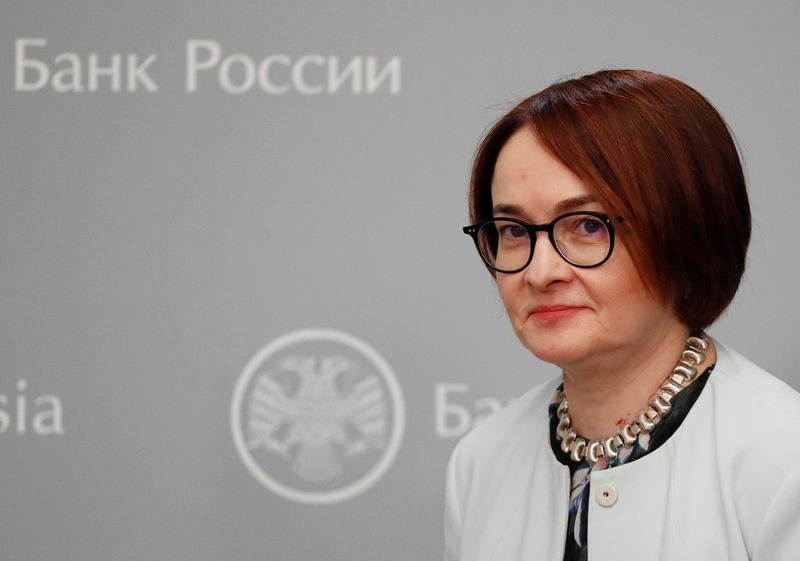

© Reuters. Russian Central Bank Governor Elvira Nabiullina attends a news conference in Moscow, Russia June 14, 2019. REUTERS/Shamil Zhumatov/File Photo
MOSCOW (Reuters) – Russia’s central bank will need two to three months to make sure that inflation is steadily declining before taking any decision on interest rate cuts, the bank’s governor Elvira Nabiullina told RBC media on Sunday.
The central bank raised its key interest rate by 100 basis points to 16% earlier in December, hiking for the fifth consecutive meeting in response to stubborn inflation, and suggested that its tightening cycle was nearly over.
Nabiullina said it was not yet clear when exactly the regulator would start cutting rates, however.
“We really need to make sure that inflation is steadily decreasing, that these are not one-off factors that can affect the rate of price growth in a particular month,” she said.
Nabiullina said the bank was taking into account a wide range of indicators but primarily those that “characterize the stability of inflation”.
“This will take two or three months or more – it depends on how much the wide range of indicators that characterize sustainable inflation declines,” she said.
The bank will next convene to set its benchmark rate on Feb. 16.
The governor also said the bank should have started monetary policy tightening earlier than in July, when it embarked on the rate-hiking cycle.

 Forex2 years ago
Forex2 years agoForex Today: the dollar is gaining strength amid gloomy sentiment at the start of the Fed’s week

 Forex2 years ago
Forex2 years agoHow is the Australian dollar doing today?

 Forex2 years ago
Forex2 years agoUnbiased review of Pocket Option broker

 Forex2 years ago
Forex2 years agoDollar to pound sterling exchange rate today: Pound plummeted to its lowest since 1985

 Cryptocurrency2 years ago
Cryptocurrency2 years agoWhat happened in the crypto market – current events today

 World2 years ago
World2 years agoWhy are modern video games an art form?

 Stock Markets2 years ago
Stock Markets2 years agoMorgan Stanley: bear market rally to continue

 Economy2 years ago
Economy2 years agoCrude oil tankers double in price due to EU anti-Russian sanctions

